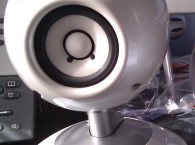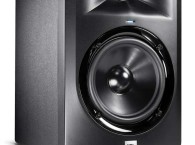Dr. Amar Bose (1929–2013)

Amar Bose, founder of Bose, passed away on July 12, 2013. (Photo courtesy of Bose Corp.)
Amar Gopal Bose (Amar Gopal Boshu) died recently at his home in Wayland, MA.
He was born November 2, 1929, and became the chairman and founder of Bose Corp. (see Photo 1). An American electrical engineer of Bengali descent, he was listed on the 2007 Forbes 400 list with a $1.8 billion net worth. The child of an Indian Bengali father and an American mother, Bose was born and raised in Philadelphia, PA. His father, Noni Gopal Bose, was an Indian freedom revolutionary from Bengal who, having been imprisoned for his political activities, fled Kolkata (Calcutta) in the 1920s to avoid further prosecution by the British colonial police.
Amar Bose first displayed his entrepreneurial skills and interest in electronics at age 13, when, during the World War II years, he enlisted school friends as co-workers in a small home business, repairing model trains and home radios to supplement his family’s income. Bose graduated from Abington Senior High School and entered Massachusetts Institute of Technology (MIT), graduating with a BS in Electrical Engineering in the early 1950s.
Bose spent a year in Eindhoven, The Netherlands, in the research labs at NV Philips Electronics and a year in Delhi, India, as a Fulbright student. In India, he met his wife, Prema, from whom he later divorced. He completed his PhD in electrical engineering from MIT, and wrote a highly mathematical thesis on nonlinear systems. Following graduation, Bose took a position at MIT as an assistant professor. He focused his research on acoustics, which led him to invent a stereo loudspeaker that would reproduce, in a domestic setting, the dominantly reflected soundfield that characterizes the listening space of the audience in a concert hall.
Bose was awarded significant patents in two fields, which, to this day, remain important to the Bose Corp. These patents were in the area of loudspeaker design and nonlinear, two-state modulated, Class D power processing.
During his early years as a MIT professor, Bose bought a high-end stereo speaker system at a RadioShack in 1956. He was reportedly underwhelmed by its performance. This would eventually pave the way for his extensive speaker technology research, which concentrated on key weaknesses in the high-end speaker systems available during his time and focused on psychoacoustics, which would become a hallmark of the company’s audio products. Bose Corp. was founded in 1964 with initial capital from several investors, including his MIT thesis adviser and professor, Dr. Y. W. Lee, who invested his life savings in the effort.
Applying similar psychoacoustic principles to headphone technology, Bose created the Tri-Port Earcup Drivers. Today, Bose Corp. is a multifaceted entity with more than 12,000 employees worldwide that produces products for home, car, and professional audio, and conducts basic research in acoustics, automotive systems, and other fields. As a privately held company, Bose Corp. does not publish its financial numbers; however a few hundred shareholders receive audited annual financial statements. In addition to running his company, Bose remained a professor at MIT until 2000.
Bose President Bob Maresca remembered the man behind the name, saying in a statement that the company is “deeply saddened” by his passing.
“It is impossible to put into words what Dr. Bose meant to each of us, and to [the company],” Maresca said. “He was more than our chairman. He was our teacher—always encouraging us, always believing that we could do great things, and that anything was possible.”

Dr. Bose is pictured with his mentors Dr. Y. W. Lee, far left, and Professor Norbert Wiener, right, at MIT’s Research Laboratory of Electronics in 1955. (Photo courtesy of Bose Corp.)
Bose carried that mantra into his work as an MIT teacher, joining the faculty in 1956 and spending more than 45 years as an educator. He retired in 2001. According to MIT President L. Rafael Reif, “Amar Bose was an exceptional human being and an extraordinarily gifted leader. He made quality mentoring and a joyful pursuit of excellence, ideas, and possibilities the hallmark of his career in teaching, research, and business. I learned from him and was inspired by him, every single time I met with him.”
During his tenure at MIT, Bose started a research program in physical acoustics and psychoacoustics and received the Baker Teaching Award in 1963–1964, among other honors (see Photo 2). In 2011, Bose gave the school the majority of his company’s stock in the form of nonvoting shares, ensuring that all dividends would be used for the school’s education and research mission.
His son, Vanu Bose, is the founder and CEO of Vanu, a firm whose software-based radio technology provides a wireless infrastructure that enables individual base stations to simultaneously operate GSM, CDMA, and iDEN. Amar Bose’s daughter, Maiya, is a chiropractor.
Timothy Dorwart (1955–2013)

Timothy Dorwat, CEO of Community Professional Loudspeakers, passed away on July 15, 2013.
Timothy Dorwart, formerly of Whitehall, PA, passed away on July 15, 2013, after a valiant 10-year battle with cancer (see Photo 3). He was 58. An industry leader and a mentor to many, Dorwart was known as a warm and gentle man who loved his family and his friends. He had more than 30 years of sales, manufacturing, and management experience in the pro audio and music industries.
Dorwart had an impressive career. He spent 20 years as the Director of the Bose Professional Services Division, followed by four years as a Vice President for DMX Music. From 2007 to 2010, he led the Stanton Group through a successful turnaround as its CEO. He guided the acquisition of the Stanton Group to Gibson Guitar, forming its new Pro Audio Division. Dorwart served as the General Manager of the Gibson Guitar Pro Audio Division, until he accepted the position as CEO of Community Professional Loudspeakers in February 2013.
Pure Audio Ships New Jongo Products
Pure Audio, the Internet-radio and docking-speaker company, has shipped the first products in its Jongo wireless multi-room audio lineup. The Jongo series consists of two tabletop Bluetooth/Wi-Fi speakers, a Bluetooth/Wi-Fi adapter that connects to existing stereo systems, and a Pure Connect iOS and Android app.
The app uses Wi-Fi to act as a Jongo-system controller, simultaneously streams songs stored on a mobile device to multiple speakers, and concurrently streams Internet radio stations and music services to multiple speakers. The app accesses more than 20,000 radio stations, about 200,000 free on-demand programs and podcasts, and the Pure Music subscription-streaming service.
Two different songs can be simultaneously streamed to different speakers if two mobile devices are used at the same time. With Bluetooth, users can stream music stored on a mobile device and any app’s audio to one speaker at a time.
The Pure Connect app also enables users to direct PC-stored music to Jongo speakers. Only one song at a time can be streamed. The $199 Jongo S3 portable, rechargeable wireless speaker and the $129 A2 multiroom hi-fi adapter are available from several retailers, including Amazon, Target, OfficeMax, and Pure.
The Pure Connect app for iOS devices is available with an Android version to be released later this year. The company also plans availability of the 100-W AC-only tabletop T6 speaker. The A2, J3, and T6 incorporate built-in Wi-Fi 802.11b/g with WEP and WPA/WPA2 support; Ethernet port; and decoding of WMA, AAC, MP3, MP2, and FLAC audio files. The AC/DC J3 features a 3.5” neodymium upward-firing mid/bass driver and four 0.75” high-frequency drivers in 360° with a total 10-W RMS output. Its rechargeable battery pack delivers at least 10 h of listening per charge. The J3 and T6 come with color grille options. The A2 adapter incorporates 24-bit internal DAC and optical, coaxial, and dual (RCA) phono analog audio outputs.
Bowers & Wilkins Introduces the CM10
Bowers & Wilkins is replacing the flagship speaker in its CM series, bringing technologies used in its reference 800 series to the CM series for the first time. The CM10 replaces the CM9 and became available in August at a suggested price of $4,000 per pair.

The new CM10 is shown with a painted black-gloss finish. (Photo courtesy of Bowers & Wilkins)
The CM10 will be available in a painted black-gloss finish or in two real-wood veneers, rosewood or wenge. With the new technologies and other improvements, the CM10 plays louder than its predecessor, delivers more extended bass and delivers better imaging with lower distortion.
Technologies incorporated from the 800 series include a tweeter placed on the top of the speaker cabinet, which provides better imaging and dispersion and creates a more natural, spacious sound. The tweeter’s aluminum dome is strengthened using a second aluminum layer to stiffen the whole structure and prevent the voice coil from going “out of round” at higher frequencies. As a result, the double dome pushes the first break-up frequency up from the standard dome’s 30 to 38 kHz. This makes the tweeter “more piston-like” in the audible frequencies below 20 kHz and delivers greater clarity and control even at high volume levels. Putting the tweeter on top of the cabinet also helped open space for three bass drivers instead of two without increasing cabinet height. The result is increased sensitivity, deeper bass, lower distortion, and higher maximum output, the company said.
For the first time in a CM series speaker, the midrange driver, a Kevlar FST driver, is decoupled from the rest of the cabinet to reduce cabinet coloration. Moving the midrange closer to the top of the cabinet also improves dispersion and increases the sense of airiness.
Circuit City for Sale
Circuit City, the stores still empty with the Circuit City logo showing, is up for sale once again. Current owner Systemax has put the trademark and domain names of Circuit City and fellow former consumer electronics (CE) chain CompUSA up for sale after consolidating those businesses under its TigerDirect brand last year. The company acquired Circuit City’s intellectual property in a 2009 bankruptcy auction and purchased the CompUSA brand and 16 of its stores in 2008, as former Systemax retail executive Gilbert Fiorentino sought to fill a CE market vacuum.
Fiorentino later resigned and returned millions to Systemax amid charges of kickbacks and theft. He reached a separate settlement with the SEC last year. Last month, his brother, Carl Fiorentino, was indicted and now faces jail time for taking millions in bribes from Systemax suppliers. According to Hilco Streambank, which is handling the sale, the Circuit City and CompUSA websites drew “tens of millions” of annual visits under Systemax, while its co-branded chain of CompUSA and TigerDirect stores grew to 43 locations at its peak.
VOXX Sees Gain Despite Slower Sales
VOXX International turned a net profit and higher operating income, but sales were slightly off in its fiscal first quarter, which ended May 31. Its net income was $2.1 million in the quarter compared with a prior year’s net loss of $4.7 million. Operating income for the quarter was $3.4 million, an 11.6% gain over the year-ago period performance of $3.1 million. Net sales were $193 million, a decrease of $1 million, or 0.5%, compared with net sales of $194 million reported in the comparable year-ago period, VOXX reported.
Automotive sales for the quarter were $104.9 million, an increase of 4.5% over $100.4 million reported in the comparable period last year.
Premium audio sales for the fiscal 2014 first quarter were $40.2 million, an increase of approximately 1.7% as compared with $39.5 million reported in the comparable period last year. Voxx had growth in its domestic operations, primarily driven by higher sales of new soundbar products and premium wireless speakers. This growth was partially offset by lower international sales, predominantly in Europe.
Consumer accessories sales were $47.6 million for the quarter, a decrease of approximately 11.8% as compared with $54 million reported in last year’s comparable period. This decline was related to lower international sales, mostly in Europe. The declines were partially offset by increased sales in domestic operations, driven primarily by higher sales of wireless speakers and personal sound amplifier products, VOXX said. As a percentage of sales for the fiscal first quarter, automotive represented 54.3%, premium audio represented 20.8%, and consumer accessories had a 24.7% share.






